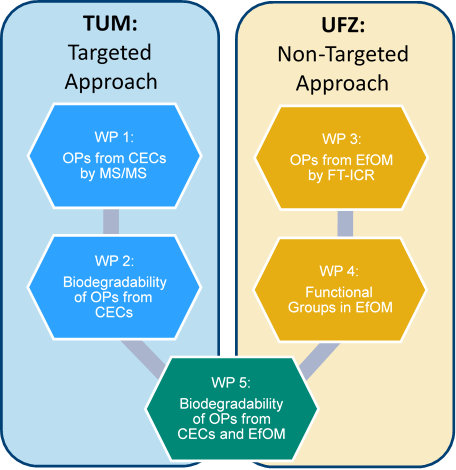OZEOM
Functional group specific reactivity, transformation and persistence of CECs and EfOM during wastewater ozonation (OZEOM)
Contaminants of emergent concern (CEC) as well as effluent organic matter (EfOM) found in wastewater both contain functional groups that react with ozone during wastewater treatment to form ozonation products (OPs). However, while CECs have well defined functional groups, EfOM has not been characterized well enough to know which functional groups, or how many, are present to react with ozone. Instead, EfOM has been treated as an interfering substance, consuming ozone so less is available to react with the CECs. The transformation products from ozonation are not well known or easy to identify in complex mixtures, making evaluation of persistence and toxicity of the newly formed products difficult.
Because ozone reacts preferentially with specific functional groups, we can examine the products formed from each functional group found in EfOM to better predict the OPs of other CECs without the need to study all possible CECs. Some functional groups may react with ozone to make OPs with more environmental persistence and possibly more toxicological risks.
This research will identify the functional groups that are more stable after ozonation in EfOM, find and quantify the functional groups of concern in the EfOM found in wastewater effluents, and compare the magnitude of the OPs formed from both the CECs and the EfOM to see which source contributes the most stable OPs. By studying the OPs from EfOM, the relationship between the distinct functional groups and the more stable products can be distinguished, generating valuable information for the evaluation of other CECs through a read-across strategy.
Together with our project partners from the Chair of Urban Water Systems Engineering at the Technical University of Munich (TUM), this systematic approach will be used to better understand the production of OPs and better predict the occurrence of persistent OPs.

Contact persons:
Elaine Jennings
Prof. Thorsten Reemtsma
Dr. Oliver Lechtenfeld
Project partner:
PD Dr. Uwe Hübner (TU München)

